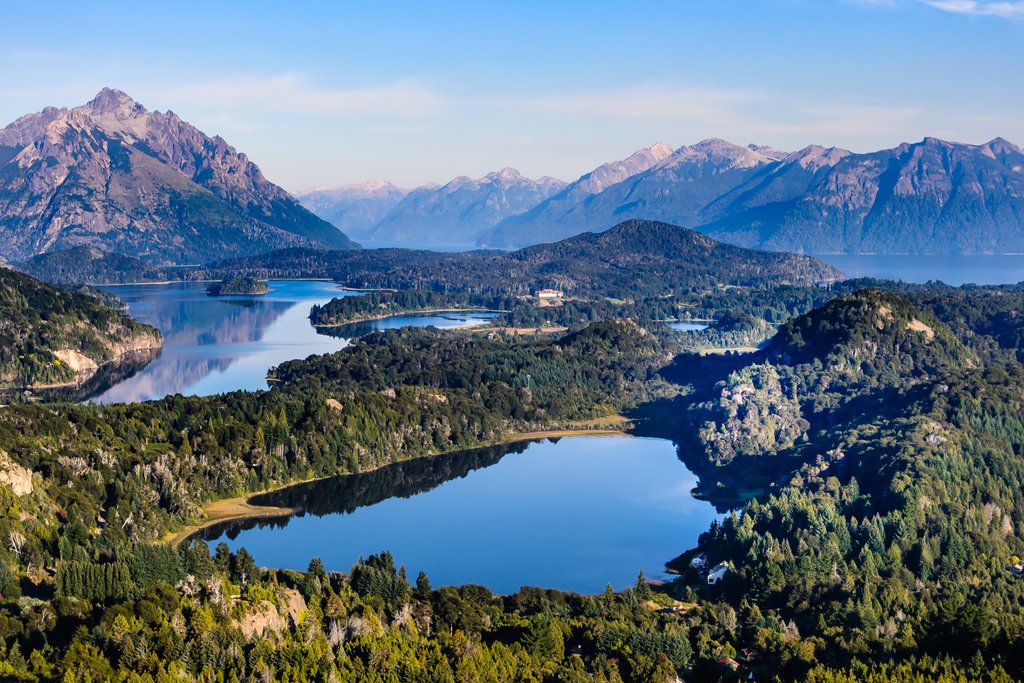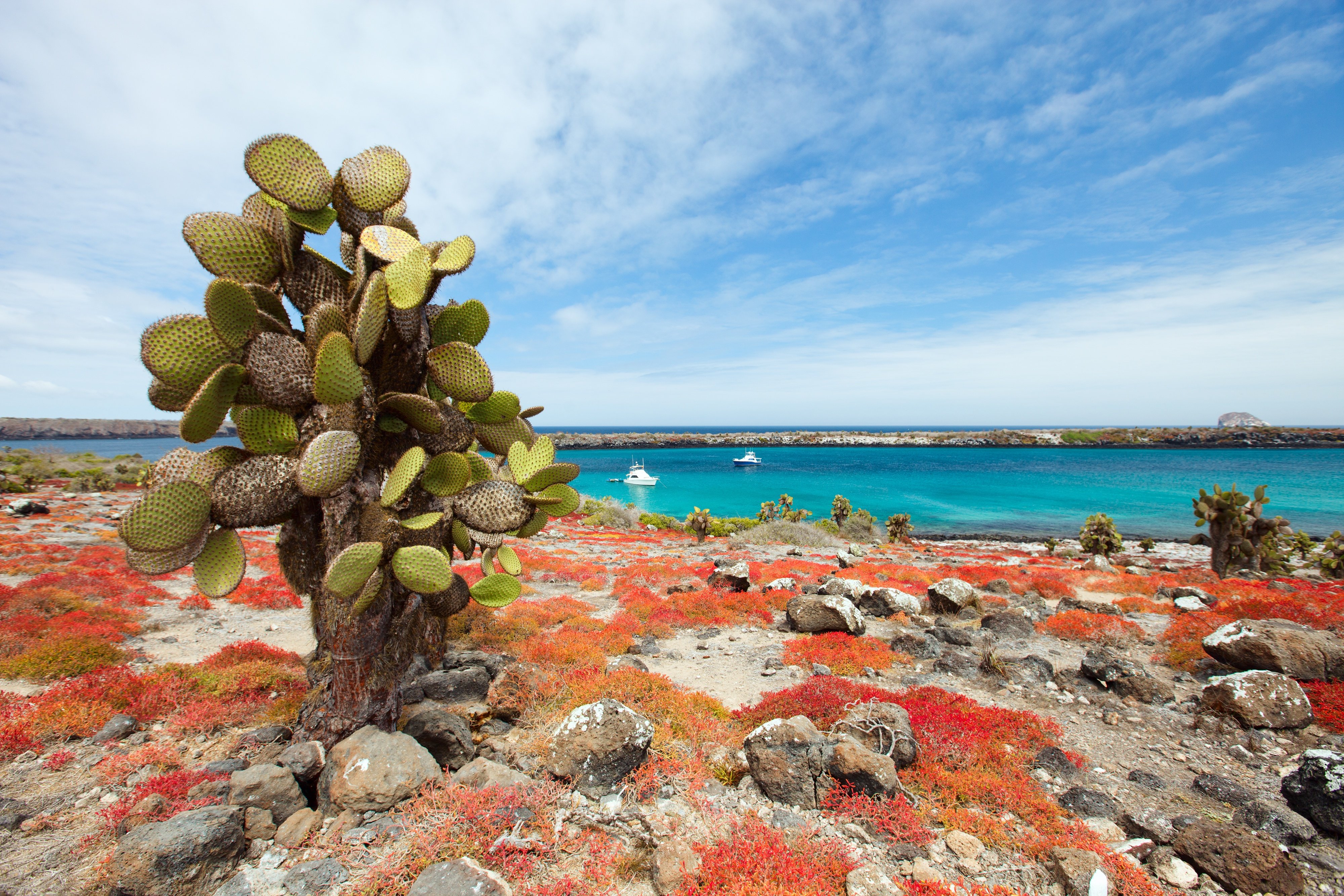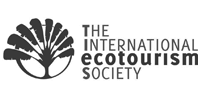For many people, Ecuador is often associated with the Galapagos Islands or the Equator. Fewer will know that Ecuador is home to what was penned the “Avenue of the Volcanoes” by German explorer Alexander von Humboldt. The Avenue travels between the Eastern and Western cordilleras, through small Ecuadorian towns, dotted with astounding volcanoes left and right.
Living beneath the Volcanoes
Ecuadorians have adapted to the lifestyle of being one with these volcanoes. The Andes Mountains serve as the “spine of civilization” for the region, stretching from the north of Colombia more than 4,000 miles to the tip of Argentina in the south. The beauty of the Ecuador highlands can be attributed to the fertility that these volcanic lands have given them. Tourism has become popular in recent years (for good reason) with travel companies offering more tours and accommodations for travelers who are eager to see these volcanoes and meet the local people that live and work among them.
The Volcanoes
In total, Ecuador has 47 volcanos - extinct, dormant and active. The Galapagos is home to 15, the other 32 are located on the mainland. As you travel along the Avenue here are the biggest and best, from north to south:
Cayambe
Cayambe, at an elevation of 18,996 feet, is the 3rd highest volcano in Ecuador and one of the most popular choices for climbers after Cotopaxi. It is located about 40 miles northeast of Quito and its crossed by the Equator on its southern flanks. What makes it so magnificent is its ice cap glacier, which covers 22 square kilometers. If you are traveling the Avenue south from Otavalo you will pass within about 10 miles of the volcano as you pass through the town of the same name.
Antisana
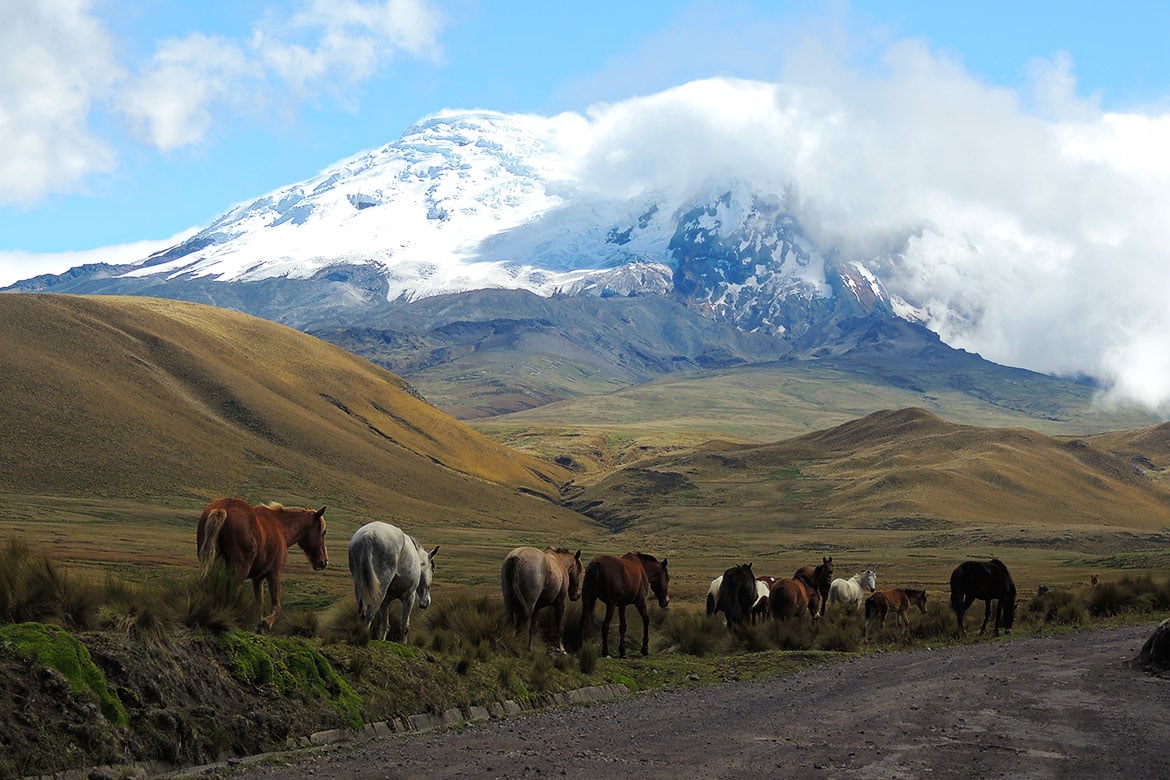
Antisana, around 30 miles southeast of Quito, is the 4th highest volcano in Ecuador at an elevation of 18,870 feet. Considered one of the most challenging climbs in Ecuador, photographers and hikers are also drawn to its slopes and contours. The peak of the volcano is often wrapped in clouds, hiding in plain sight from visitors. The surrounding Antisana Ecological Reserve, one of the 34 protected areas in Ecuador, is home to wild deer and other wildlife. La Mica Lake is one of the best spots for fishing. The best time of the year to visit are the drier and clearer months from December to February. A side trip can take you almost to the snow line. The impressive landscape features lava flows - “sculpted” stones that emerge from under the earth like waves. The nearby lakes and cliffs are the habitat of the Andean Condor. Other important fauna and flora include the “Chuquiraguas”, the “Guabillas”, foxes, hummingbirds and many more.
Cotopaxi
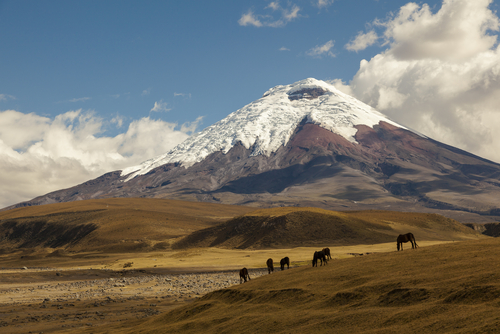
Cotopaxi is the highest active volcano in Ecuador and the 2nd highest peak in the country, located about an hour by car from Quito. Sitting at an elevation of 19,347 feet, the volcano is considered a favorite by tourists due to its almost perfect cone shape and its snow-covered top. It’s one of the most climbed and most visited volcanoes in Ecuador due to its amazing geological and photographic scenery. Weather permitting you can hike to the snowline at over 14,000 feet.
Take the optional hike around Limpiopungo Lake, home to a variety of highland birds, including the Andean Condor.
Chimborazo
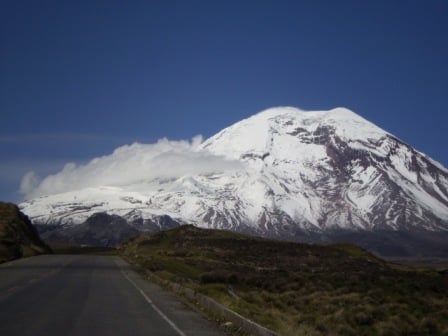
Located around 95 miles from Quito, the dormant Chimborazo is the highest peak in all of Ecuador sitting at an elevation of 20,548 feet. This glacier-like volcano can be seen all the way from Quito on a clear day. Chimborazo is surrounded by a desert valley inhabited by vicuña, llama and alpaca.
El Altar
An extinct volcano about 100 miles south of Quito. It was so named by early Spaniard visitors due to its resemblance to friars and nuns listening to a bishop around a church altar. El Altar is actually a massif made up of nine peaks, the highest summit at 17,451 feet above sea level. The Altar is considered the most demanding climb of Ecuador’s volcanoes
Sangay
Sangay Volcano tops out at 17,158 feet above sea level and is a beautiful snow-capped volcano that overlooks the Amazon basin to the east. Its conical shape is considered iconic, almost comparable to that of Mt Fuji. It’s also one of the most active volcanoes in Ecuador, although it’s only erupted three times. This is because the eruption that started in 1934 continues to the present time.
Explorations along The Avenue Of Volcanoes
The Avenue of Volcanoes offers tourists of all kinds adventures and side trips en route to Cuenca.
Devil’s Nose Train Ride
The 7-mile train ride takes you from the town of Alausi to Silambe, descending over 500 meters, traveling through gorgeous mountain scenery, dramatic switchbacks and the spectacular Chanchan River Gorge. This is an amazing engineering feat considering that it was built at the start of the 20th century. In the earlier days, people were allowed to sit at the top of the train’s roof, but due to safety issues passengers are now required to remain inside the carriages. The carriages and train itself undergo continuous maintenance to ensure the safety and comfort of their passengers.
Baños – Volcano, Rivers and Hot Spring Spas
If there are volcanoes, there will always be hot springs. Baños de Agua Santa has both, volcano and hot springs. Baños is a short detour off the Avenue and is quite popular for adventure sports and thermal baths. The city is an excellent base for river rafting, kayaking, canyoning, hiking, mountain biking, bridge jumping. The best-known spa in town is Las Piscinas de la Virgen, which is a public bath that sits below a waterfall near the edge of the town. The spa has 3 pools – one cold, one warm, and one hot pool that goes up to 118 °F. There are several very nice spa resorts and hotels in and around town. Baños makes a perfect overnight stay along the Avenue.
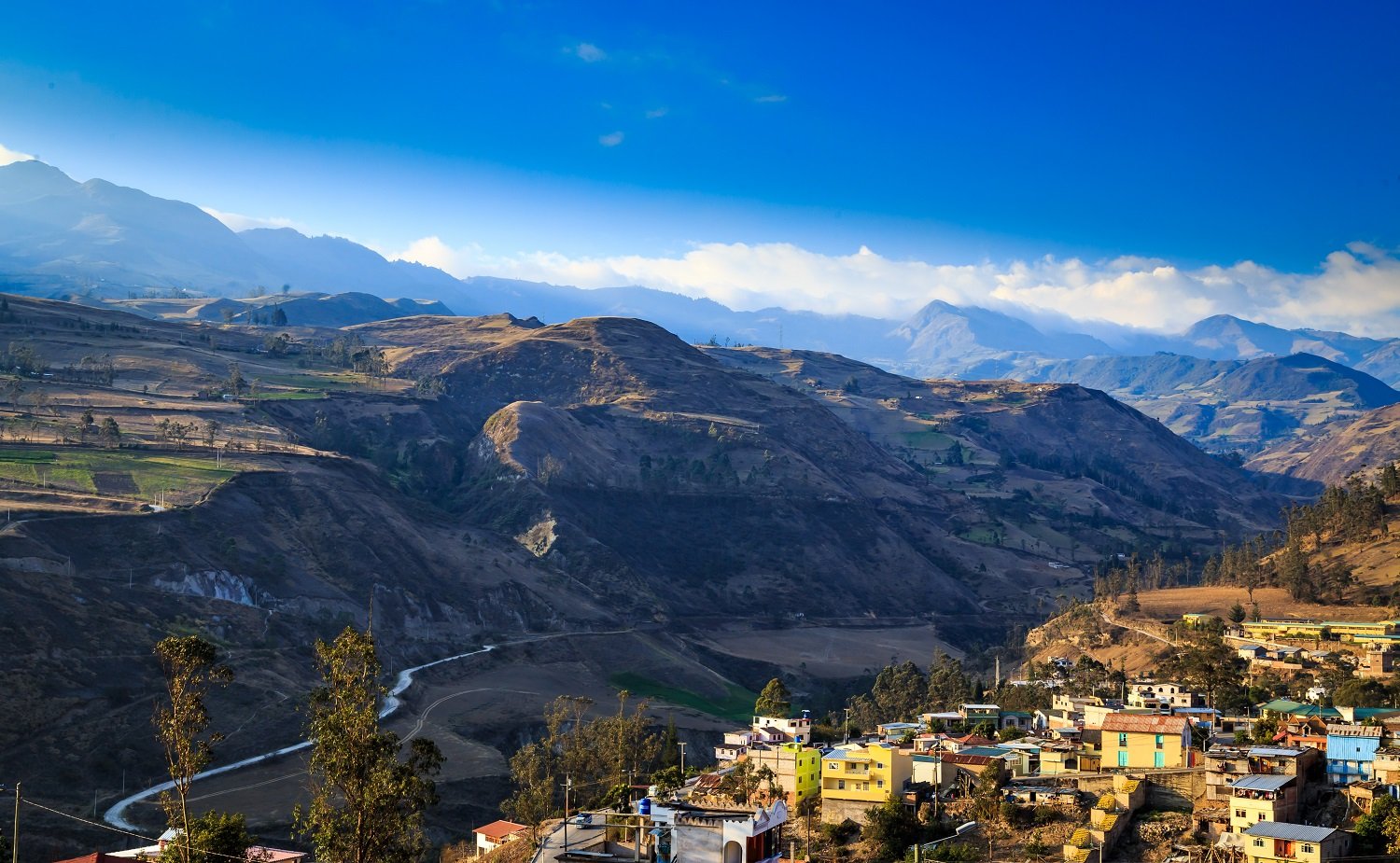
Baños
The following is a classic 3-day Avenue of the Volcanoes Itinerary starting in Quito or the Otavalo area (can be done in reverse, starting in Cuenca and finishing in Quito)
Day 1
As you head south, and up, your first visit will be Cotopaxi National Park, home to the highest active snowcapped volcano on earth. If the weather permits, from the parking place and trailhead at 14,760 ft. (3500m), you can walk to the snow line (high-altitude experience and/or training recommended) or take a hike around Limpiopungo Lake.
Depending on the day of the week, you may stop at one of the many picturesque Indian markets along the way. Stop for lunch at a typical restaurant or hacienda.
In the afternoon, continue through the Andes to Riobamba, via Latacunga and Ambato. Be sure to make time for a short tour of this provincial town.
Overnight in Riobamba at a local hosteria or hotel.

Main street Riobamba
Day 2
Continuing on today through the small towns, lovely landscapes and terraced countryside of the Avenue of Volcanoes to the small village of Alausi. Here you will board the train and set off on one of South America's truly memorable rides as you pass from the highlands towards the lowlands through the narrow Devil's Nose canyon.
From Silambe continue traveling south to the Inca and Pre-Inca (Cañari tribe) fortress of Ingapirca. Here you can explore the walls, unique chambers and strange bathtub carvings in the cliffs and stones.
Late afternoon you'll pass through the towns of Biblian and Azogues, before arriving in Cuenca at night. Overnight at a Cuenca hotel.
Day 3
Start the day with a tour of Cuenca, founded by the Spaniards in 1557 on the site of the indigenous settlement of Tomebamba. It is the third largest city in Ecuador. This beautiful colonial city is renowned for charming flower boxes on iron-scrolled balconies, a dozen shining silvery domes, white adobe walls, tile red roofs, wedding cake churches and cobblestone streets. The Tomebamba is one of the four rivers that flows through the heart of the city. You'll also witness the huge “new” Cuenca Cathedral and the “old one”, both are located on the main plaza. Visit El Carmen church, convent and flowers square, and the Conceptas museum and the Central Bank Museum.
Cuenca is the center of the country's craft industry. You may enjoy one of the many handicraft shops, which sell silver, gold and ceramics, or stroll through the workshops and markets where Panama hats and a wealth of folkloric items and crafts are available.
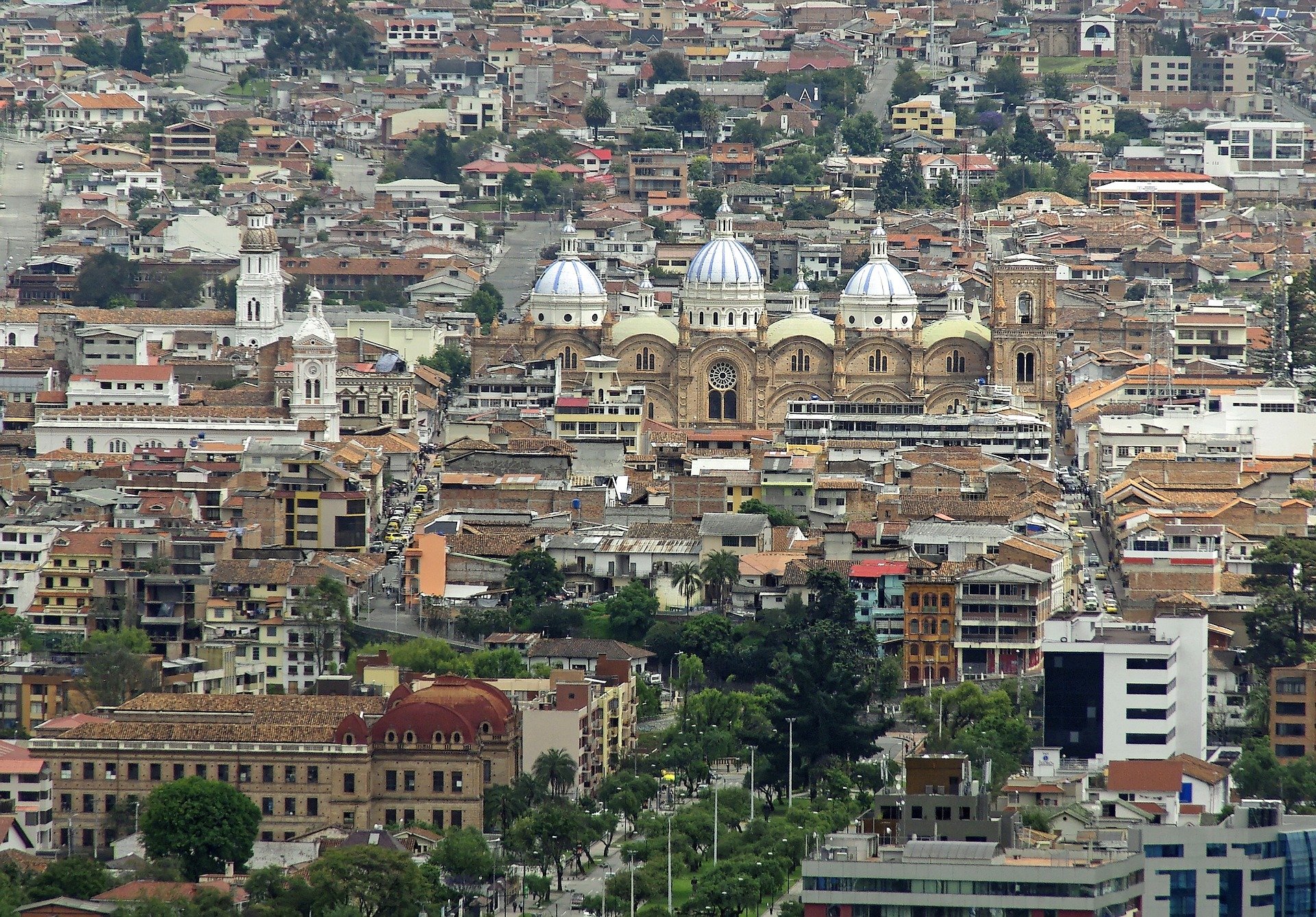
Image by Albert Dezetter from Pixabay
With an extra day (or two) in Cuenca you can visit Chordeleg and Gualaceo. Chordeleg is a small town about an hour east of Cuenca, and famous for its fine filigree jewelry. In the twenty or so small shops lining the main plaza and surrounding area in town, shoppers can find filigree necklaces, bracelets, and earrings made of gold or silver and of excellent quality. Designs range from the contemporary and bold, to the traditional and subtle.
Chordeleg has been a jewelry making center since before the Inca, and industrious locals also make a variety of other crafts such as panama hats, textiles, pottery, baskets, mats, musical instruments, and woodcarvings. In the main plaza there is a small, free museum which explains the history of the handicrafts and the techniques used.
One operation worthy of support is Chordeleg Agricultural Craft Centre (CACH). CACH is an association that organizes weavers of the famous Panama Hats or "sombreros de paja toquilla." Today the organization has 54 members and owns and operates a hat store in Chordeleg, as well as a straw-processing company. The goal is to provide high-quality hats in exchange for fair wages.
Prices are much lower than comparable pieces in the United States and Europe, making Chordeleg a real bargain for savvy shoppers. Forgery, however, is a concern and it's best to know your metals well before making an expensive purchase (guides are very helpful here). It's not unusual for shopkeepers to weigh the pieces and quote a price based on the weight. Bartering is expected, and if you buy multiple pieces from one store, it's easier to get a better price.
The town of Gualaceo, nicknamed "El Jardin Del Azuay", is a sizable town located in a valley about twenty miles east of Cuenca. Gualaceo is crossed by the Santa Barbara River and its three smaller tributaries, creating a beautiful riverfront scenery. Gualaceo is surrounded by mountains 3,500 meters tall, with hiking and biking possibilities.
From Cuenca you can fly back to Quito or continue overland to Guayaquil (and your flight to the Galapagos).
Places to Stay
Riobamba
Hacienda Abraspungo is our go-to place, located just outside of Riobamba. It's not a bad idea to spend a few nights there. The hacienda can arrange horseback riding and mountain biking in the countryside.

Mansion Santa Isabella – a restored Spanish colonial house located in the historic center of town.

Baños
Samari Spa Resort and the Sangay Spa Hotel are two of the best places in the area. The spas features a heated indoor pool, sauna, turkish bath, hydro-massage, polar bath, individual sauna-boxes. Spa services include body & facial treatments, aromatherapy, chromotherapy, massage.
Cuenca
Mansion Alcazar Boutique Hotel – a turn-of-the-century restored mansion located in the heart of the city.

The Hotel Victoria is a charming boutique hotel located in the Barranco neighborhood within walking distance of the Historical Center.

The Hotel San Juan is a restored historic former home also located in the historic center.

When to go
The weather in the Ecuadorian highlands is unpredictable if anything. However, June through September is generally the driest time of the year. December through March are the wettest months to the north. In Cuenca, March through May tend to be the rainiest months.
Check out a few of our sample itineraries that include the Avenue of the Volcanoes:
Andes and Amazon Multisport Travel Package
Ecuador is the ultimate tourist destination for those who’re looking to hike around and beneath some of the world’s most beautiful volcanoes. The Avenue of the Volcanoes is an all-too-often overlooked pre- or post-Galapagos extension.
Learn more at our Ecuador Travel Planning Hub.
Start planning your trip to Ecuador and the Avenue of the Volcanoes with a Lost World Adventures consultant.

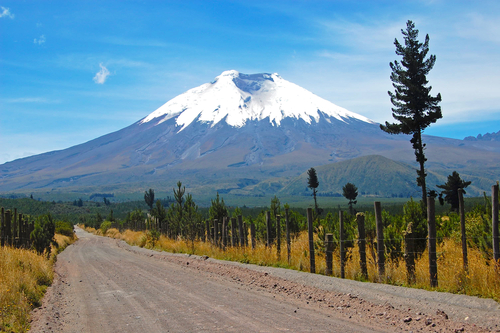

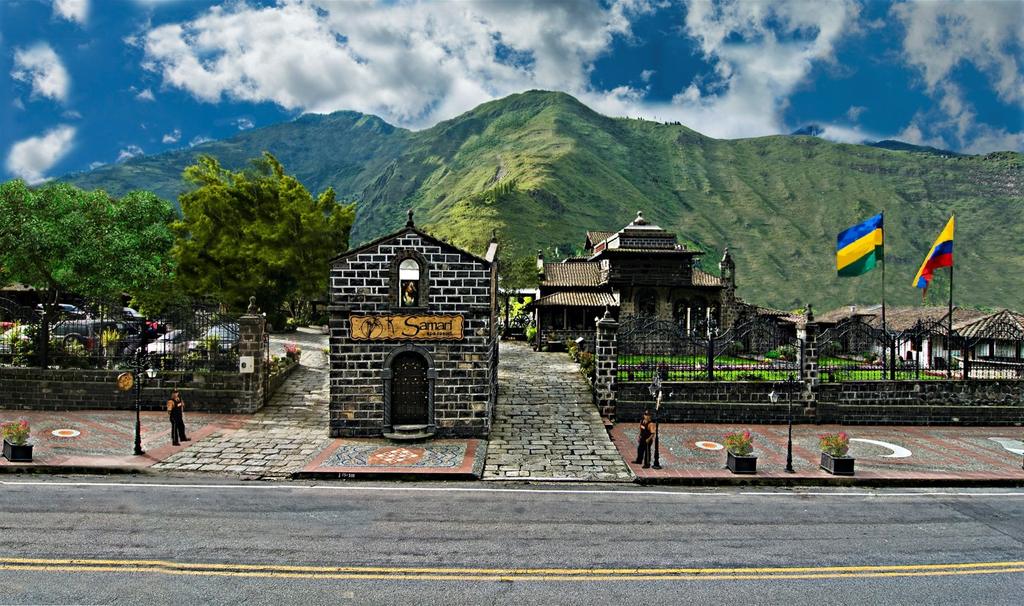


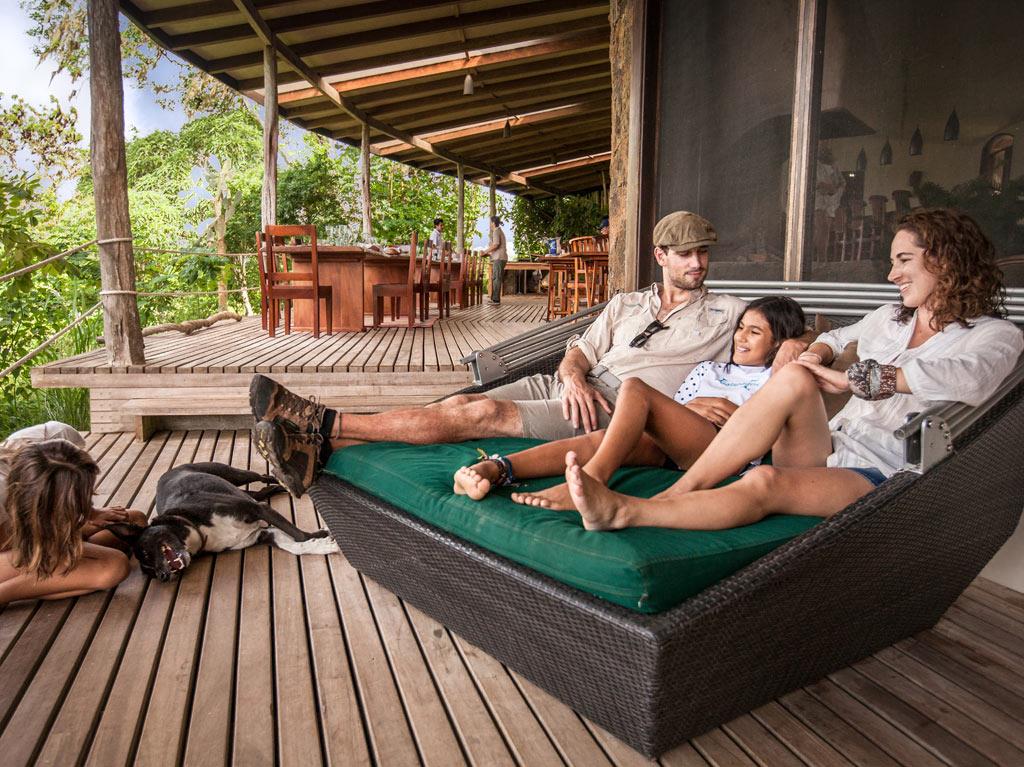
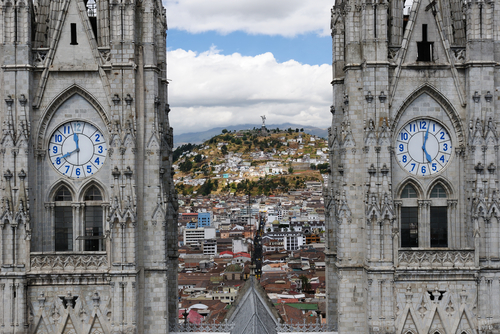
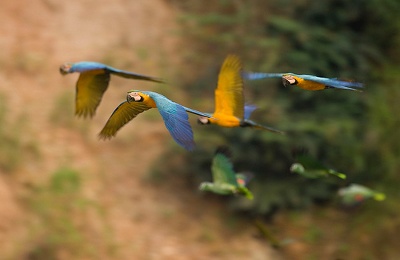
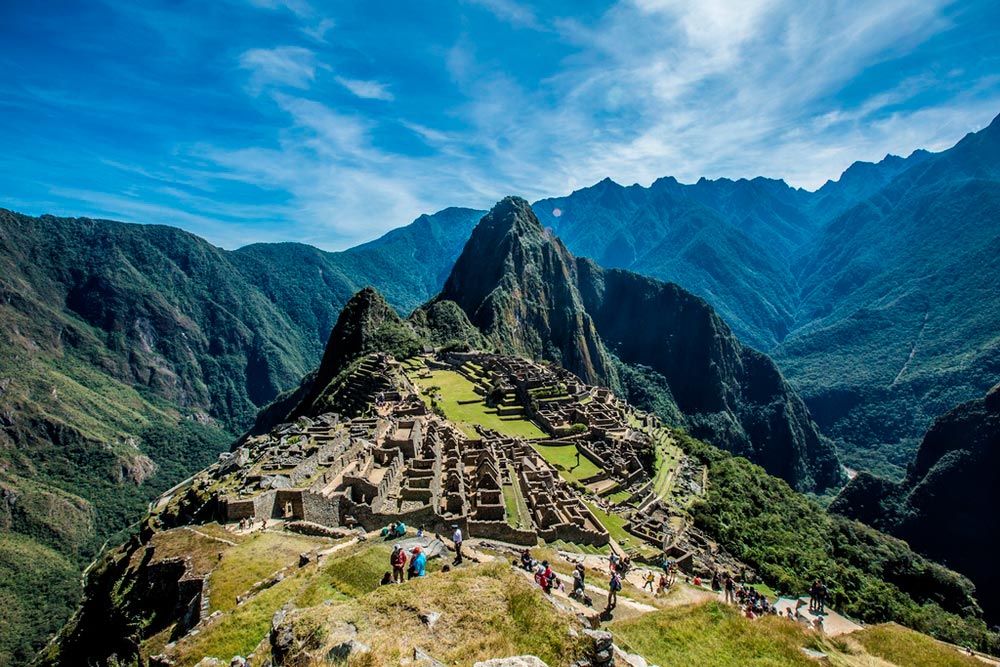
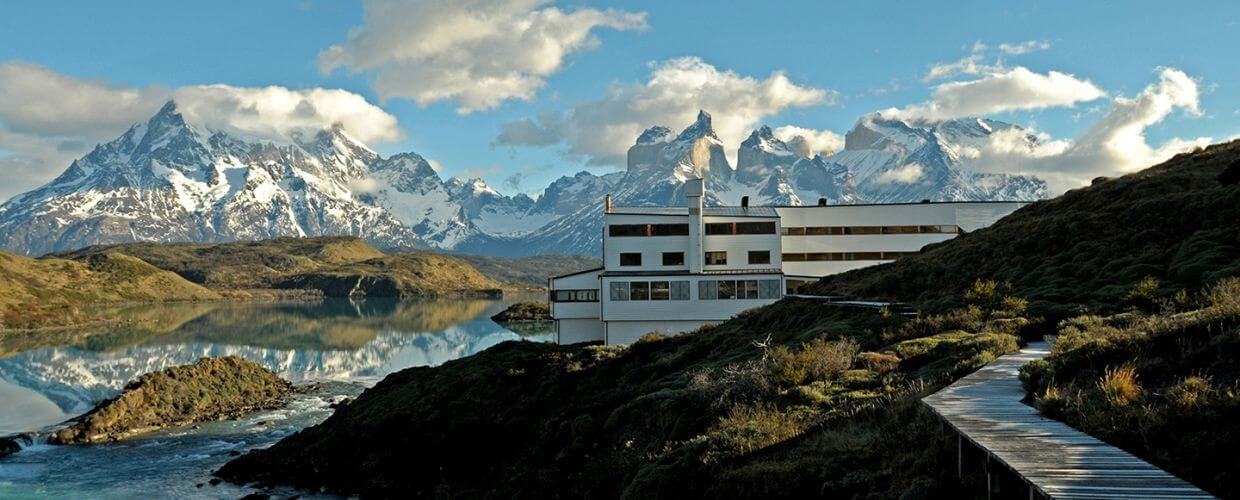
.jpg)
